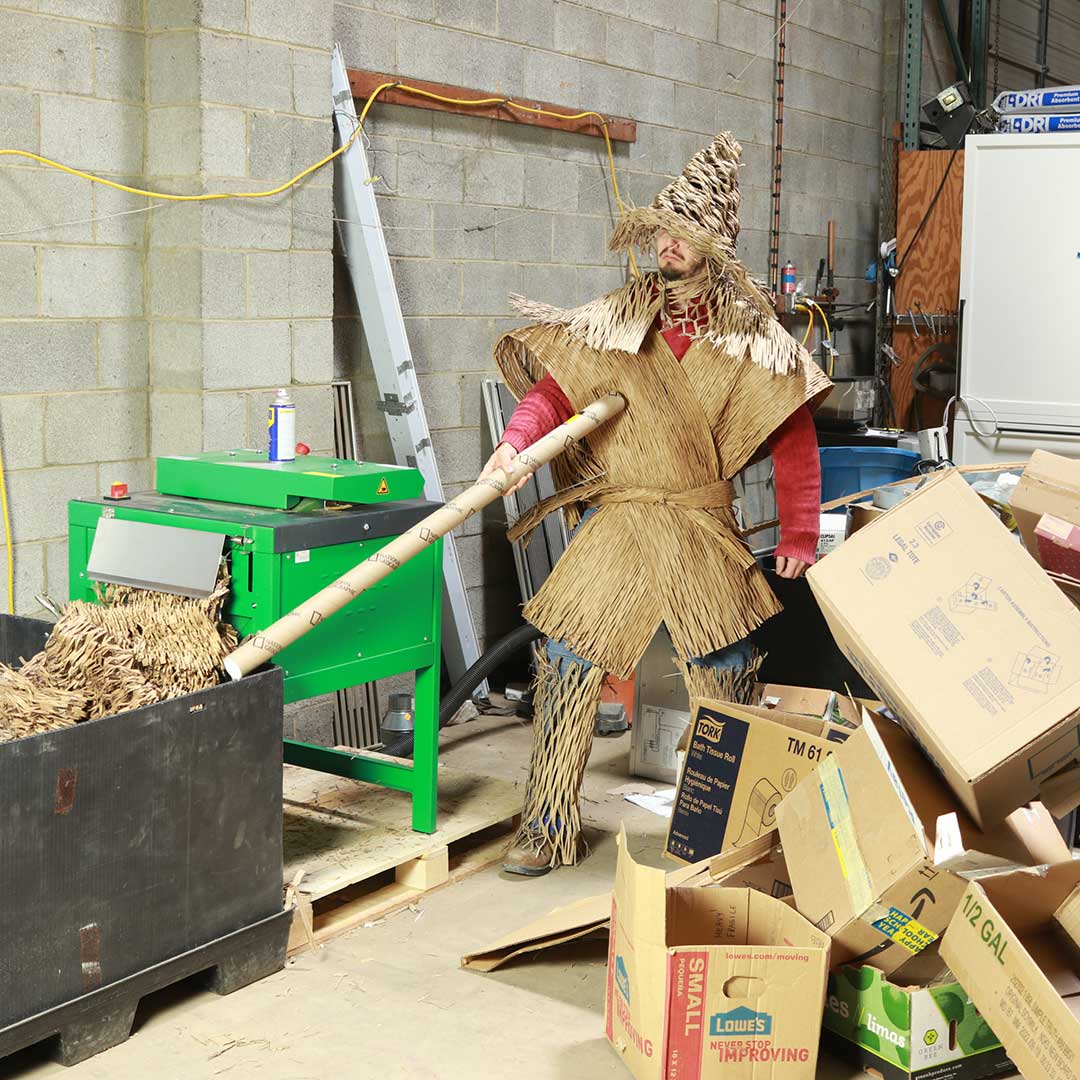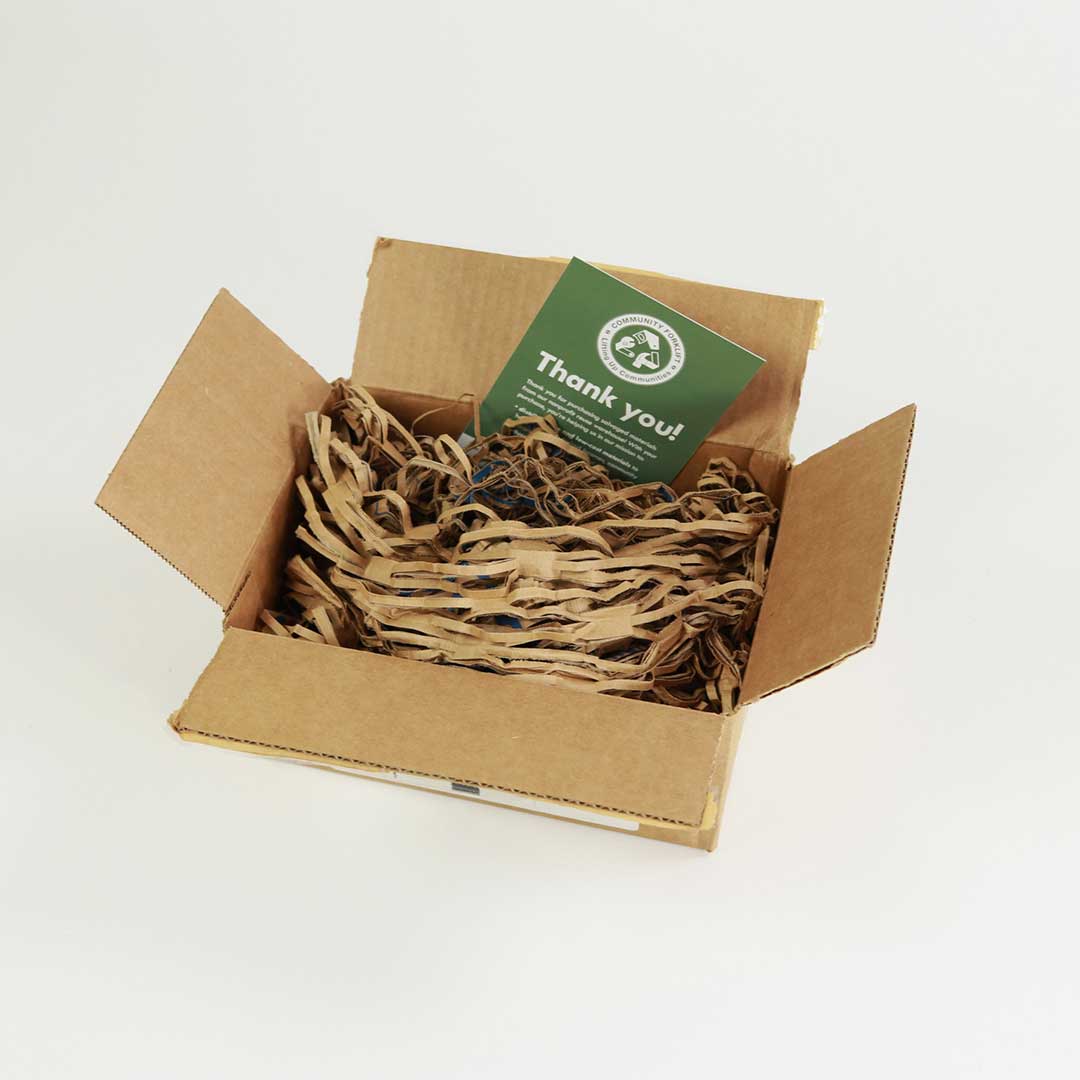Boxes. Our modern infrastructure depends on boxes, and it’s little wonder why: they’re durable, recyclable, cheap, and lightweight. Everyone loves a good box—the kind of box you hesitate to get rid of when decluttering because it’s sturdy and crisp and, well, it’s a really good box. But as soon as a box loses its structural integrity, there’s no saving it. It’s relegated to the bin.
As a reuse nonprofit and nexus for stuff, Community Forklift amasses a lot of cardboard boxes. They come to us as the packaging around materials or already reused to transport armloads of donations. We in turn reuse what we can, but many boxes are damaged and at the end of their usable life as containers.
A SOLUTION FOR DAMAGED CARDBOARD
So what can be done with the damaged cardboard (sung to the tune of ‘what do we do with a drunken sailor’)? Consider the original 3 Rs of waste management: Reduce, Reuse, Recycle. To promote environmental protection as well as minimize resource and energy consumption, the 3 Rs are ordered hierarchically. When possible we should reduce our material consumption, reuse what items and materials we have as much as possible, and recycle when items cannot be reused anymore.
Our Online Sales department took the initiative and investigated an interesting cardboard-reuse option: cardboard conversion. With the proper equipment, one can shred broken cardboard boxes into sturdy, flexible, recyclable, and compostable packing material. Through our research, we discovered that some non-profits already do this; Serrv International, for example, packs their online orders with shredded cardboard. When we asked them how they came to use this material, their Communications Coordinator replied:
“We decided to use shredded cardboard because we had so much excess cardboard. Our artisan partners ship many things in cardboard boxes, and we didn’t want them to go to waste, so we dug in and learned about the existence of cardboard shredding machines. We purchased a Green Machine so that we can shred some of those boxes in-house.”
After crunching the numbers to determine how much waste we could divert and reuse with a cardboard converter, we found that the upfront cost would take considerable time to recoup. We reached out to Crescent Cities Charities and they helped us kick-start our new cardboard conversion program with a generous grant towards the purchase of a CP320 cardboard shredder.
ADVENTURES IN CARDBOARD CONVERSION
After a month of shredding excess cardboard and using it as packing material for orders we ship through our eBay store, we’ve shocked ourselves with the volume of cardboard we’ve reused and therefore pulled from the waste stream. Not only does the shredded cardboard replace other packing materials that would need to be used, the cardboard is still perfectly recyclable once it reaches our customers. Residential recycling programs just ask that customers contain shredded paper and cardboard in rolled-up paper bags before placing it in the recycling bin for collection. Alternatively, customers can reuse the shredded cardboard as mulch, as composting “browns,” as substrate for mushroom farming, as pet bedding, as storage for potatoes to keep them from sprouting, or even as their own packing material.
We’re excited about the possibilities for this new initiative! However, we’re still monitoring our own cardboard intake and use, so please do not bring us your excess cardboard for shredding. We also do not currently have shredded cardboard for sale, but please keep an eye out in our newsletter or our social media for updates!
Theo the Tan says “You shall not waste!” After a month of shredding excess cardboard and using it as packing material for orders we ship through our eBay store, we’ve shocked ourselves with the volume of cardboard we’ve reused.
Every time you donate or shop at Community Forklift, you’re helping us lift up local communities through reuse. We turn the construction waste stream into a resource stream for communities in the DC region – by keeping perfectly good items out of the landfill, preserving historical materials, providing low-cost building supplies, and creating local green jobs.



